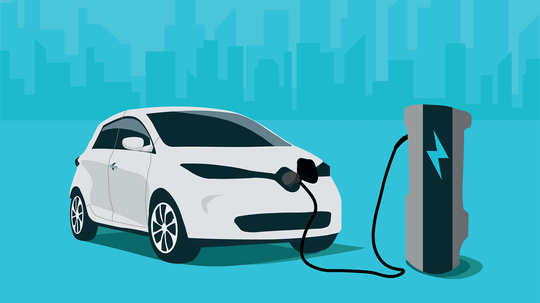
With National Drive Electric Week upon us as we move into the fall season, those considering purchasing an electric vehicle now or in the future may be weighing the pros, cons and process involved to make it happen.
Auto manufacturers are slated to release at least four dozen new electric vehicles between 2023 and 2026; and utilities — like Kentucky’s largest, Louisville Gas and Electric Company and Kentucky Utilities Company — are partnering with other utilities, agencies and organizations to expand EV charging infrastructure. But there may still be outstanding questions about how and whether to make owning an EV a tangible reality.
To help empower motorists during National Drive Electric Week and year-round, LG&E and KU offer the following three tips to help get started.
1. Have your home or garage checked out by a certified electrician. With the purchase of an EV comes the convenience of being able to fuel up at your residence. To make sure your home or garage is prepared to charge safely, be sure to get an inspection by a licensed electrician.
2. Consider how and where you’ll charge up. To keep an EV fueled, you can charge at home or on the go. Contrary to popular assumption, powering up at home doesn’t take any extra equipment. While it will take a bit longer, you can plug straight into a standard 120-Volt outlet, which is known as Level 1 charging, and provides a full charge in about 6 to 24 hours.
To speed up charging, you can install a 240V, or dryer-style, outlet in your home or garage and plug in with the home charger for your vehicle. This is called Level 2 charging and provides a full charge in about 2 to 12 hours.
To power up as fast as possible, fast chargers, which are only available in public commercial areas, provide a full charge in 15 to 90 minutes.
3. Tap into available resources. Several different agencies and organizations offer information that can help answer outstanding questions about buying an EV. A few that could be especially helpful include: the U.S. Department of Energy’s alternative fuel station site, where you can locate public charging stations in Kentucky and across the nation; and the IRS website, where you can find the latest on tax credits available to EV buyers who qualify.
In addition, be sure to tap into your local utility to find out details such as how much it will cost to charge your vehicle from home.
Here in Kentucky, LG&E and KU have a map identifying the locations of the utilities’ public charging stations, offer businesses the opportunity to host charging stations at their sites, and have a Marketplace website where you can shop for and compare vehicles. You can also check out information on time of day rates, which could help you take advantage of savings depending on when and how you use energy in your household.
Check out lge-ku.com/ev for more information.
Louisville Gas and Electric Company and Kentucky Utilities Company, part of the PPL Corporation (NYSE: PPL) family of companies, are regulated utilities that serve more than 1.3 million customers and have consistently ranked among the best companies for customer service in the United States.


